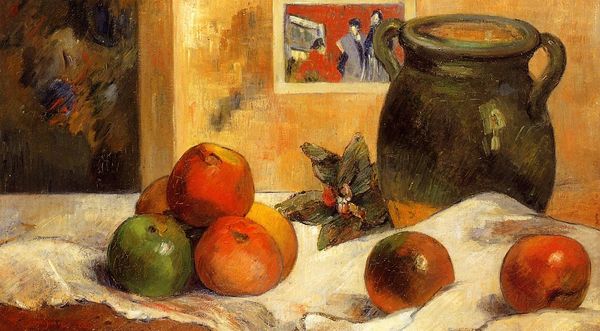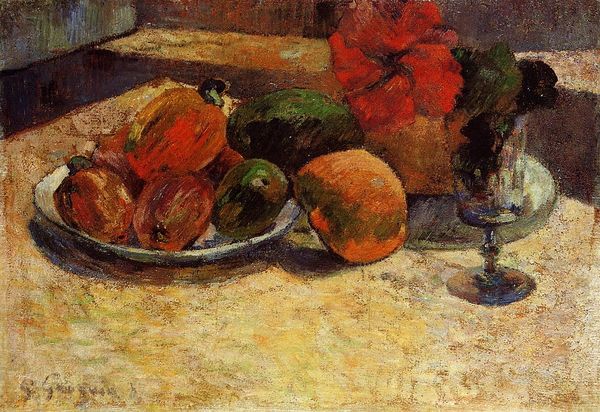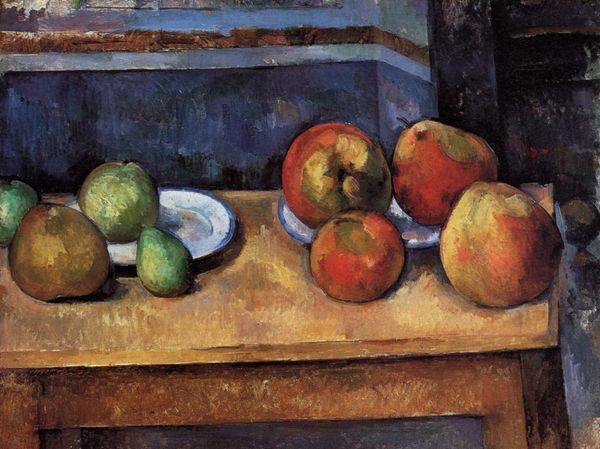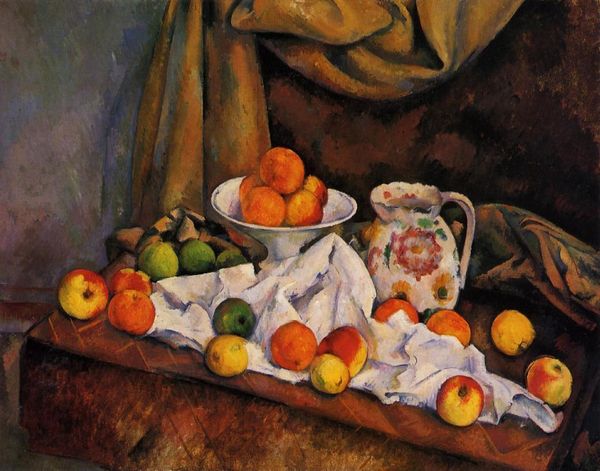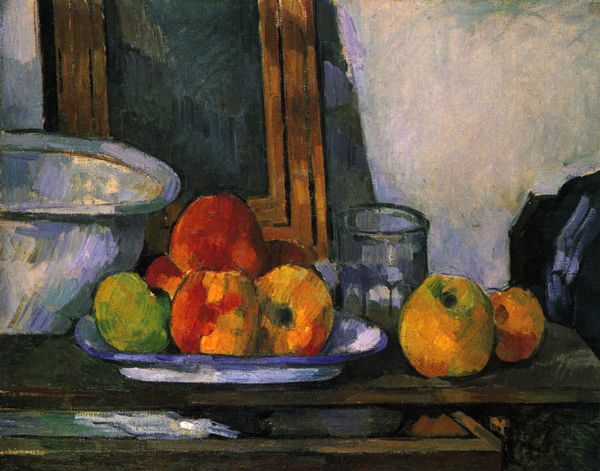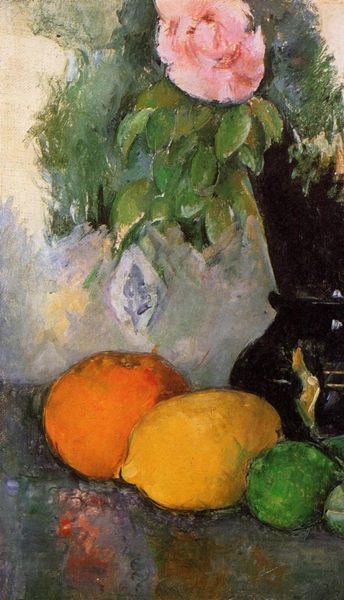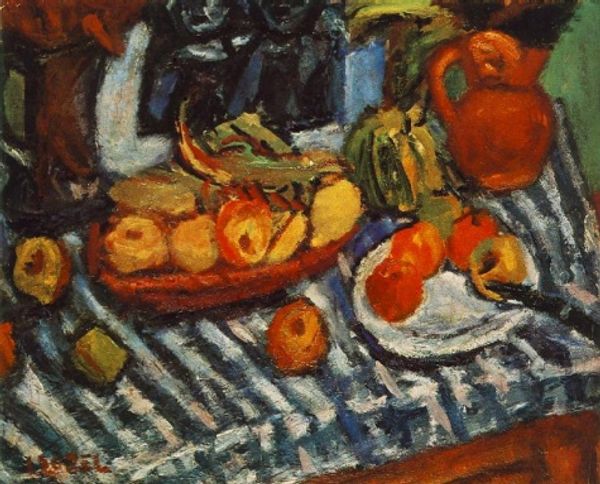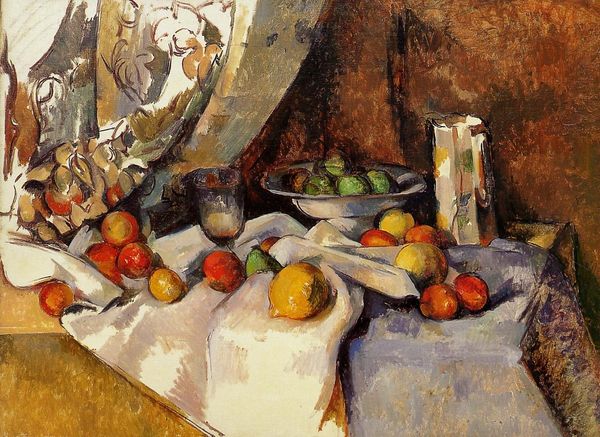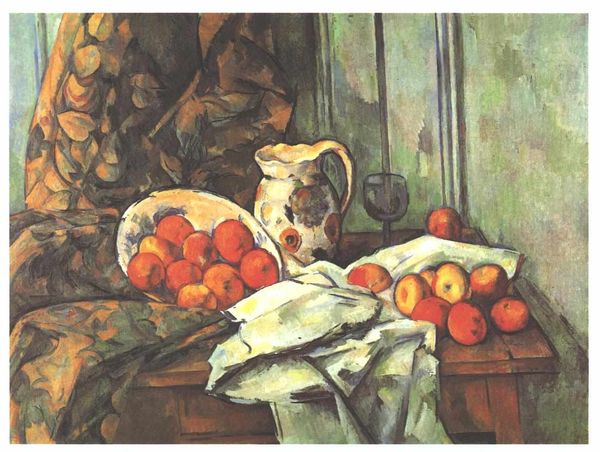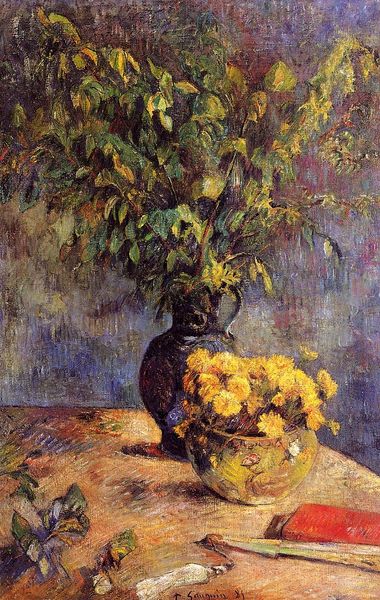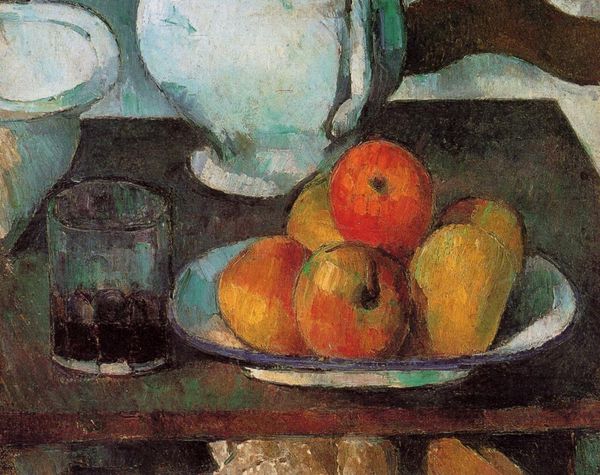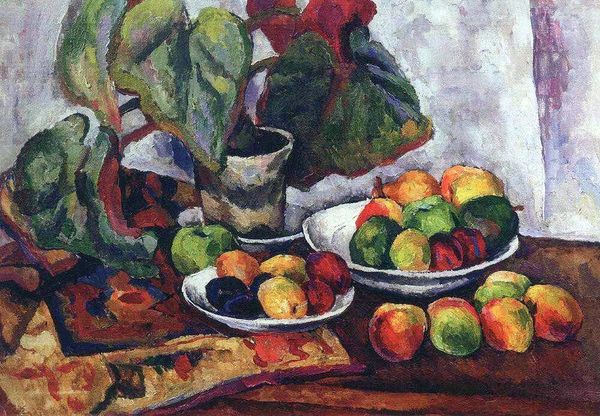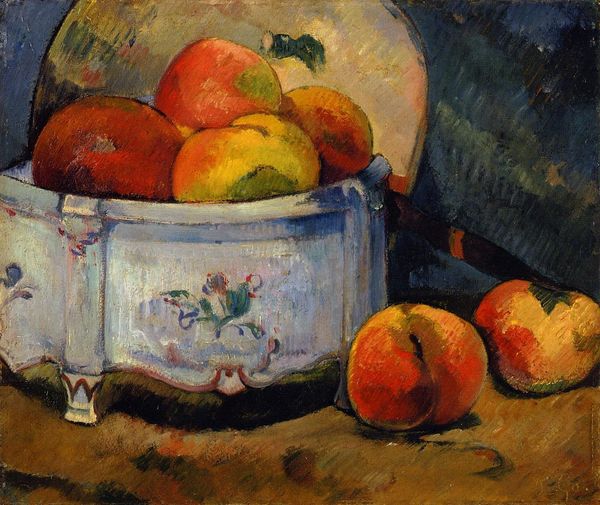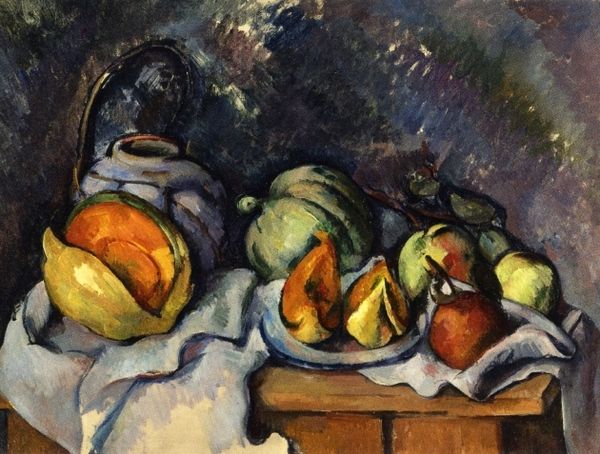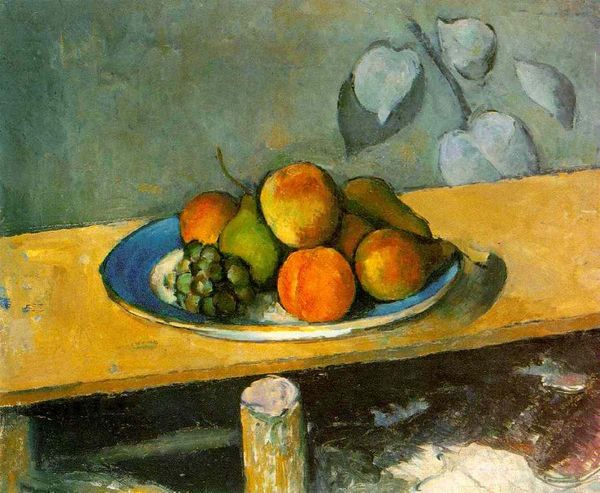
oil-paint
#
still-life
#
oil-paint
#
oil painting
#
fruit
#
post-impressionism
Dimensions: 28.5 x 36.2 cm
Copyright: Public domain
Curator: This is Paul Gauguin's "Still Life with Apples, a Pear and a Ceramic Portrait Jug," painted in 1889. It's currently held here at the Fogg Museum. Editor: Immediately, I'm struck by the quiet tension. The almost unsettling juxtaposition of the vibrant fruit and the somber jug, and how those objects converse with one another about the gaze of colonialism in Tahiti at the end of the 19th century. Curator: It's true that Gauguin's fascination with the "exotic" significantly shaped his oeuvre, including the works from this period, and even this particular one. This was painted before he first went to Tahiti, but many think it captures his building interest. He, of course, moved there permanently in 1895. And of course his art and his biography are controversial. Editor: Absolutely. This still life acts as a subtle cultural commentary, doesn't it? Placing the apples and pear, symbols of Western art, next to the portrait jug suggests a dialogue, but also a power dynamic, as these sorts of art are fetishized and put in museums back home, such as here in Boston. And of course there is also his troubling relationship with young, native women, the trauma inflicted that goes unmentioned when art history romanticizes an artist’s muse. Curator: Indeed. Even the brushstrokes here, though typical of Post-Impressionism, carry a certain weight. The thickness and texture of the oil paint seem to solidify these themes, grounding them within a palpable reality. The objects depicted are also important to keep in mind given France's colonialism at the time. France, unlike most colonizers in the 19th century, saw it as their duty to help educate the places that it was colonizing and this object, whether the real world inspiration, or painted still, symbolizes the colonizer's ideas around primitivism at the time. Editor: This is a clear picture. To step back a bit, it also helps us see and think critically about how artworks can unintentionally perpetuate historical injustices. By contextualizing this still life with an intersectional analysis, and bringing awareness to how an idealized painting from one culture has consequences for another we create a better discourse that seeks to decolonize art history. Curator: And by recognizing how social and cultural factors influence even something as seemingly simple as a still life, we can begin to unpack the narratives art constructs. Editor: Agreed. And that in turn encourages new approaches to engaging with art that confront and dismantle inequitable structures of looking.
Comments
No comments
Be the first to comment and join the conversation on the ultimate creative platform.
